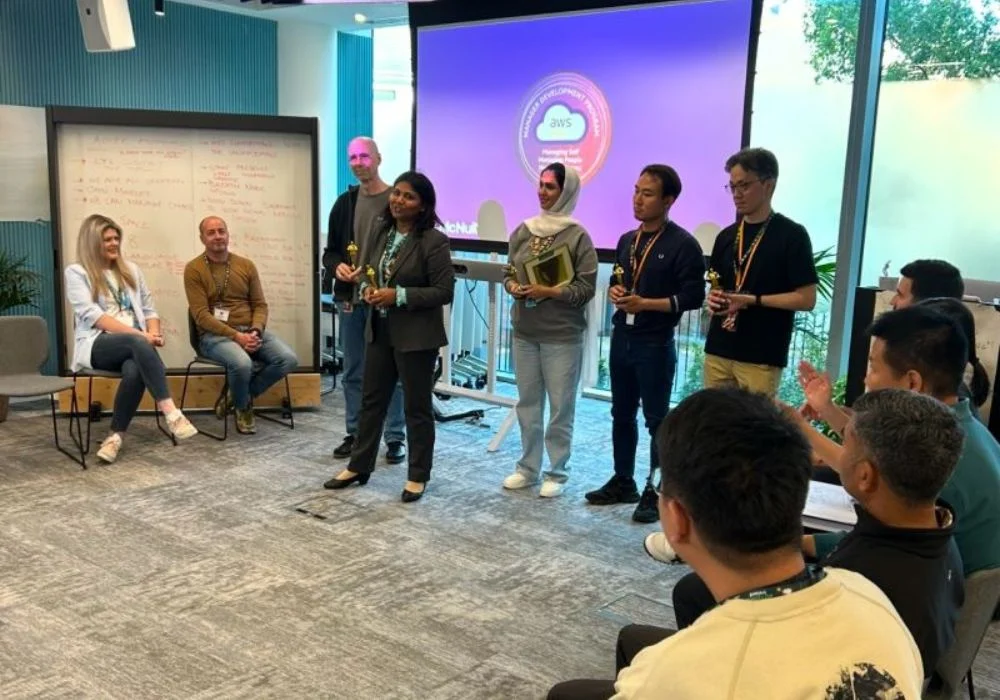Lockdown. Social distancing. Working from home. Just some of the new phrases added to our daily vocabulary. The unprecedented global Covid-19 pandemic has forced drastic changes to how we live our lives and how we work. It comes as no surprise that businesses are facing many challenges with the return-to-work transition.
Cast our minds back to late 2019 when several cases of a new respiratory illness emerged in the Wuhan region of China, and then to early 2020 when the World Health Organisation declared a worldwide pandemic due to a novel coronavirus, known around the world as Covid-19. Immediately Governments began enacting strategies to limit the spread: social distancing, wearing PPE, movement restrictions and even nationwide lockdowns. Many non-essential businesses shut their doors indefinitely, with vast amounts of employees shifting to working from home in a newly ushered virtual working world.
The Challenges of the Covid-19 Pandemic
What cannot be underestimated or overlooked is the effect this dramatic shift in ways of working has had on the mental health and wellbeing of employees around the world. While working from home may have had positives for some, like eliminating commuting time, others will likely have had a period of real difficulty. An already burgeoning concern in recent years based on the emergence of smartphones and mobile devices, the concept of work-life balance is a major concern after the pandemic.
At the beginning of the pandemic, working from home and the move to virtual work was a temporary solution to closed premises. With no previously established protocol or culture for this kind of work, employees may have found it difficult to disconnect and turn off without the physical separation of leaving the office in the evening. For many, working from home will have caused a major shift in their work-life balance. The forced virtual ways of working have impacted the effectiveness of employees, with one study reporting that 51% of employees feel less connected to their teams during this period (University of Limerick, 2020).
Outside of working from home, this has also been an extremely demanding time psychologically. The pandemic has created new stressors that have increased levels of strain, with 60% of employees in Ireland reporting higher levels of stress since the pandemic began (University of Limerick, 2020). Fear of contracting the virus or infecting friends or family have been ever present concerns. Unprecedented lockdown restrictions have left many dealing with isolation and loneliness and a recent study has suggested that these situations can result in lasting psychological distress and an increase in depression, anxiety and Post-traumatic Stress Disorder (PTSD) (Dawson & Golijani-Moghaddamare, 2020).
For many, informal coping mechanisms like social events, hobbies, sports or going to the gym, which can help mitigate stress, have all been prevented. According to one study, 66% of employees reported they often neglect looking after their physical health as a direct result of working from home (Aviva, 2020). For many, working from home and lockdown situations may have resulted in long periods of being sedentary, with regular physical activity channels, like the gym or sports clubs, closed and prevented. Similarly, many employees may be dealing with implications from being unwell, with what is being dubbed “long Covid” still not fully understood. As such, there could be numerous mental and physical challenges employees are dealing with due to the pandemic, which must be kept in mind.
Challenges of Returning to Work
With the coming transitionary period of returning to work, there will be challenges facing businesses and employees. Just like during the pandemic, many employees will experience worry over safety precautions returning to work and fear of contracting Covid-19 or bringing the virus home and infecting family members. One study reported 69% of employees are anxious about being potentially exposed to Covid-19 after returning to work (Matrix, 2021).
Despite the negative impacts listed above, some employees may have adjusted well and prefer working from home, with the removal of long commutes, increased job autonomy, more time with family members and more flexible ways of working, among others. Breaking this routine and returning to work may make this time a period of increased stress and anxiety for employees who might prefer working from home. Furthermore, with many other places of business still closed, employees may face a host of challenges in successfully returning to work. They may have difficulty finding childcare with schools or minding facilities closed or concerns about personal safety in travelling on public transport or increased delays due to decreased services.
Moreover, once physically back in the workplace, many employees will have to adjust to newly added measures because of Covid-19 safety precautions. This could mean altered working environments, such as the presence of plastic screens or desks and office spaces segregated. It may involve changes in the ability to collaborate or work with colleagues. Maybe canteens remain closed or social distancing measures prevent coffee breaks or lunches with colleagues. These changes may seem small in the grand scheme of things, but these could be sources of stress and discomfort for many.
Returning to Work
What are some ways you can support your employees in the return to work transition? The mental health and wellbeing of employees during these times should be of utmost priority. A potentially distressed and emotionally strained workforce are facing another dramatic shift in their daily lives in returning to work. According to a Matrix report (2021), two-thirds of employees are concerned at the lack of additional mental health supports provided by their employer to assist them in this phase. Ensure your employees have adequate support for their mental health and wellbeing and remind them clearly and regularly of the Employee Assistance Programme and the exact procedure for how to avail of the service.
Consider implementing hybrid ways of working or a staggered return to the office to ensure employees can adapt. Some employees will want to return immediately, while others may not want to at all or may not be able to with childcare difficulties. Flexibility will be a crucial aspect of any return to work transition in the post-Covid period. Implement flexible ways of working based on your employees needs where possible. Some employees will be able to adjust back to the old ways of working overnight, others will need more time.
It can be easy to throw out a blanket policy to try to minimise the potential for an outbreak of Covid-19 in your workplace, like only allowing certain groups to return to work. Avoid discriminating or alienating employees based on things like age or vaccination status when returning to work and maintain employee privacy and confidentiality, especially with health matters.
Importantly, when it comes to not only returning to work but also returning to effective, efficient and productive work, communication and high performing teams are important considerations. The changes to how we have worked during the pandemic period has changed how we communicate. For many, ‘watercooler’ chats have turned into virtual meetings that have to be scheduled in advance. Simple questions to colleagues usually sorted out in 30 seconds by turning your chair in the office, require a video call or depersonalised instant messaging. Collaborating and working effectively in teams have become a challenging endeavour. In the return to work period, strategic re-integration, effective communication and fostering psychological safety among your teams are priorities.
At the end of the day, transitioning back to work will be a demanding and challenging time for both employers and employees and all efforts should be made to support your teams to continue being engaged, effective and high performing.





